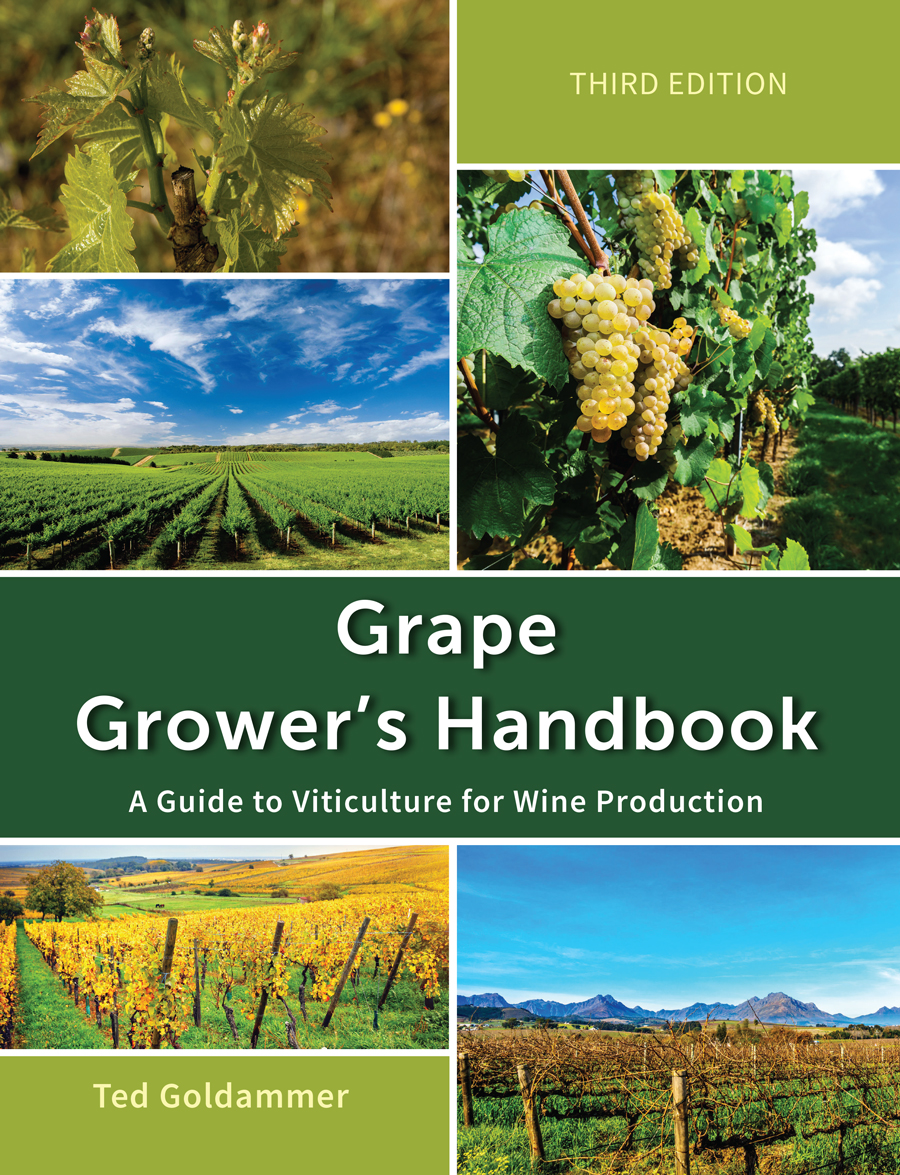Managing Vineyard Insect and Mite Pests
Mites
There are a number of mite species that are capable of causing economic damage to grape vines; two-spotted spider mite (Tetranychus urticae), yellow vine spider mite (Eotetranychus carpini), Pacific spider mite (Tetranychus pacificus), Willamette spider mite (Eotetranychus willamette), and the European red spider mite (Panonychus ulmi). The European red spider mite and two-spotted spider mite tend to be the most important species in much of Europe, whereas the yellow vine spider mite is the primary species in Mediterranean France and Italy.
Symptoms
Both adults and nymphs pierce the leaf cells and suck out the contents, leaving tiny yellow-white spots on the leaf under the surface, which coalesce into a yellow or bronze appearance on the leaves (See Figure 22.26).
Life Cycle
Most common species pass the winter as eggs laid on vine canes and trunks. Eggs hatch in spring and the young microscopic nymphs begin to feed on young foliage.
Monitoring
Monitoring for mites can begin as early as bud break and extends through the foliar season. Once vines have leafed out, spider mites can be detected by looking at the underside of the leaves for their presence as well as signs of feeding.
Cultural Pest Control
Mites are often more of a problem where grapevines are water stressed. Dust can also exacerbate mite problems.
Biological Pest Control
Pest mites are usually kept under biological control by their natural enemies, which include predatory mites, lacewing and hover fly larvae, thrips, and ladybirds. Predatory mites in particular have been shown to be very effective biological control agents for pest mites in vineyards. Three species, Galendromus occidentalis, Euseius victoriensis, and Typhlodromus doreenae are particularly important in viticultural regions for maintaining low pest mite populations.
Biorational Pest Control
Spray Oils and Insecticidal Soaps
Soaps and oils are effective against mites. Soap works by dissolving the mite’s waxy cuticle and by lowering the surface tension of water that hits the mites. Oil covers and suffocates them, and phytochemicals in the essential oils can act as direct toxins. Soap and oils are contact materials, so coverage is very important.
Chemical Pest Control
There are several options in controlling mites: Vendex (fenbutatin), Agri-Mek (abamectin), Nexter (pyridaben), Acramite (bifenazate), Zeal (etoxazole), Onager (hexythiazox), Danitol (fenpropathrin), Portal (fenpyroximate), and Brigade (bifenthrin). Nexter is very effective against European red mite but higher rates should be used for two-spotted spider mite.
Applying Control Materials
If chemical treatment for mites is warranted, use a material that has a minimal impact on predatory mites. Chemical treatments should be timed for maximum effectiveness. Treatments should not be timed according to the time of the year, since mite population buildup can vary during the season. Rather, mite and predatory mite populations should be carefully monitored, and treatments applied only when justified by the counts. Any miticide treatment should be made after, not before, herbicide application.
Click on the following topics for more information on managing vineyard insect and mite pests.

